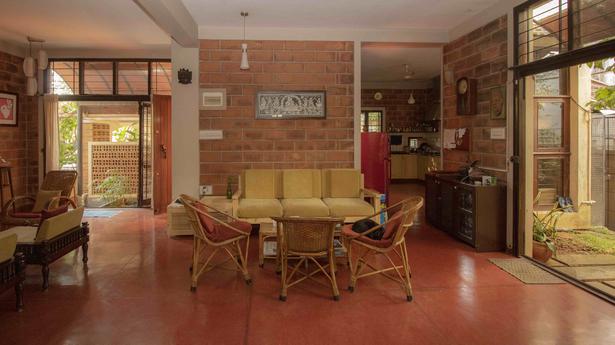
ECO-ROLES WE SHOULD PLAY
The Hindu
Architecture and construction shlould be nature friendly. By Sathya Prakash Varanashi
A common experience faced by architects trying to abide the rules lies in insisting on building bye laws, when the owners ask ‘look everyone is violating the byelaws, including the law makers - why not us with a small 30x40 site, costing in Crores?’ Of course, most architects give up and let the owners have their say, often by the fear of losing a project.
Yes, finally we gain a project, but it is at the cost of nature. Paradoxically, then we write and talk about green buildings, green-house gas emissions, global warming, climate change and sustainability! This paradox persists because we all come with diversity of aspirations, but do not own eco-responsibilities at our level. What are the potentials and possibilities we can shoulder? Can we have a satisfying experience of working in harmony or will we perpetually disagree with each other, downing the best possible ideas? Who are the four pillars of an ecological project?
Owners / promoters: Bangalore is trending today in larger houses, luxurious apartments and fancy commercial complexes. Of course, affordability matters, but there are many people who can pay for them. Is it possible to promote and own smaller buildings with judiciously built areas? Also the desire to ape the west with architecture generated by the computer software with neither cultural nor climatic fit needs to be relooked at. Prestige, image and social visibility are part of our psyche, yet being contextual is imperative if we have to live nature.
Engineers: Construction contributes up to one third of green-house gas emissions, which can be considerably reduced by adopting alternate materials and structures. Civil and structural engineers can play a major role here by not only suggesting, but also by convincing owners and architects towards eco designs. Minimising cement, reducing steel, shifting to designing for compression, using natural materials and lowering structural costs and such others can benefit all.
Designers / Architects: Unknowingly, architects influence promoters and owners towards modern ideas, manufactured materials and maintenance costs. Of course we need them, but what if they are leading to resource consumption and waste generation? Is it possible to achieve functionality, stability, longevity and beauty without the falsehood of novelty and modernity? Should the identity of architects be more important than sustainability? Many architects and institutions have proved the validity of alternate ideas, so the road ahead should be to reach out such judicious ideas to the society at large.
Builders: The last among this list of four stack holders, builders and contractors are the most important players in the act of sustainability. Without their coordination and cooperation towards ecologically sensitive projects, nothing much can be achieved. Right from enthusing the owners, agreeing with the engineers, cooperating with the designers, coordinating the project and empowering the construction team, they hold the key.
Generally, the private benefits tend to over-rule the public good. To achieve the public good, we need interdisciplinary actions, not mere meetings and seminars with people from diverse backgrounds where we hold onto our different opinions. We need to accept others and cooperate with all, not argue and contradict on personal opinions.













